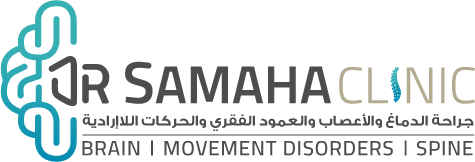Frequently Asked Questions
What is Gamma Knife Radiosurgery?
Gamma Knife is not a knife but an advanced system that can replace brain surgery or whole-brain radiation in some situations. It uses a single high dose of gamma rays delivered through up to 192 individual beams that intersect at one point with precision less than one-tenth of a millimeter (about the thickness of a sheet of paper). The Gamma Knife procedure treats brain lesions with enough radiation to control them, causing them to disappear, shrink, or stop growing.
It can be used to treat targets even in the most dangerous and hard-to-reach areas of the brain without delivering significant radiation doses to healthy brain tissues. Known as “surgery without a scalpel,” the Gamma Knife procedure does not require the surgeon to make an incision in the scalp or create an opening in the skull. Gamma Knife technology is more precise and delivers a lower dose to normal tissues than other radiosurgical tools currently available.
What Conditions Can Be Treated with Gamma Knife Radiosurgery?
Gamma Knife can be used to treat a range of neurological disorders, including brain metastases, arteriovenous malformations (AVMs), trigeminal neuralgia (facial nerve pain), meningiomas, acoustic neuromas, gliomas, and pituitary tumors. Contact your healthcare specialist to determine if Gamma Knife radiosurgery is the right option for you.
What Does a Typical Gamma Knife Treatment Involve?
On the day of treatment, the patient is given light anesthesia. Local anesthesia is then used to secure a head frame to the patient’s head. This frame, used alongside imaging procedures, ensures precise targeting.
With the frame in place, the patient undergoes an MRI or CT scan, or in the case of an arteriovenous malformation (AVM), an angiography, to accurately locate the lesion in the brain to be treated. Using this imaging procedure, the treatment team can pinpoint the location of the lesion(s) within the patient’s head.
While the patient rests, the treatment team (typically consisting of a neurosurgeon, a radiation oncologist, and a physicist) uses a computer to create a treatment plan. This process takes 30 to 90 minutes to complete, depending on the geometry and location of the target(s).
Once the individualized treatment plan is completed, the patient lies on the Gamma Knife couch so their head is precisely positioned for treatment. The patient is then automatically moved into the machine, and treatment begins.
The treatment usually lasts from 20 minutes to two hours, during which the patient feels nothing. After treatment, the patient is automatically moved out of the machine, and the head frame is removed. The patient typically goes home at this stage but may occasionally stay in the hospital overnight for observation.
How Many Sessions Does Gamma Knife Radiosurgery Require?
Gamma Knife treatment is typically completed in one day, with patients arriving in the morning and able to go home later the same day. Occasionally, doctors may choose to administer the treatment over a few days.
Does Gamma Knife Work?
Gamma Knife is not an experimental form of treatment. It is a highly effective method for treating brain tumors and neurological and functional disorders, supported by two decades of clinical research published in mainstream medical literature.
Gamma Knife is not an experimental form of treatment. Developed in 1968, it has been used to treat over a million patients. There are more than 2,500 peer-reviewed publications describing the use of Gamma Knife in a variety of clinical conditions, including brain tumors, vascular malformations, movement disorders, and facial pain.
The outcomes reported by Gamma Knife centers are typically as good as those achievable with other techniques, with lower complication rates.
What Studies Have Been Conducted or Are Being Conducted to Prove Its Effectiveness?
The number of peer-reviewed scientific articles documenting patient outcomes using Gamma Knife far exceeds any other form of stereotactic radiosurgery.
Gamma Knife centers and universities have published over 2,500 research papers and treated more than a million patients worldwide over the past fifty years. The fact that 75% of all published scientific literature on radiosurgery, including most multi-center trials, is based on the use of Gamma Knife is particularly significant, given that both Gamma Knife and LINAC (Linear Accelerator) were introduced around the same time.
